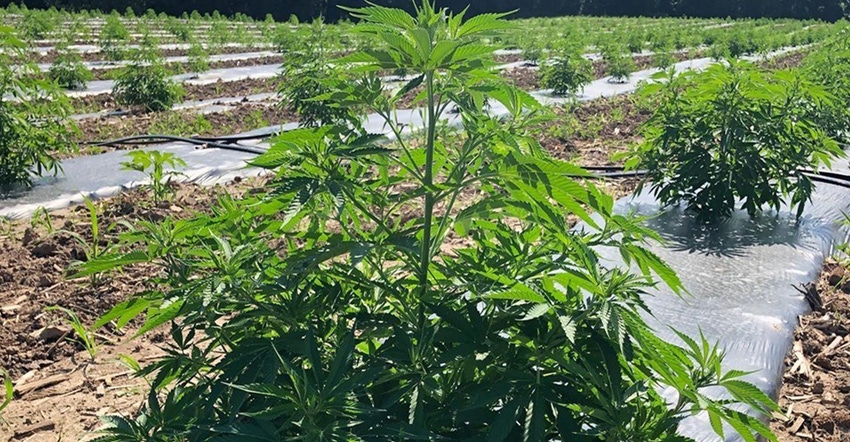December 23, 2019

The 2020 growing season marks the third year that industrial hemp can be grown legally in Wisconsin. While hemp is new and exciting, and continues to grow as an industry here, it comes with its own unique set of regulations and challenges. To grow industrial hemp, a grower must be licensed through the Wisconsin Department of Agriculture, Trade and Consumer Protection. In 2019, there were 1,325 growers licensed in the state.
While there is no deadline for applying for a license, after March 1, a 20% late fee is applied to the application. Growers are also required to grow approved varieties of hemp, and for a hemp crop to be processed, it must pass a regulatory test for the level of tetrahydrocannabinol, or THC. The requirement for Wisconsin is that total THC must be at or below 0.3%. During the 2019 harvest, 86% of the samples taken from the 4,890 acres planted passed this requirement. If a plot does not pass, the grower may request one retest; if the crop fails a second time, it must be destroyed.
Wet weather
One challenge many growers faced this past year was the same for many farmers off all crops around the state: wet weather. When hemp plants experience overly wet conditions, they are susceptible to fungal infection. There are limited approved fungicides available for controlling diseases in hemp in Wisconsin. Pesticides, including fungicides, allowed for use on hemp can be found on the DATCP Industrial Hemp website.
In 2019, a number of fungal diseases were identified in Wisconsin hemp, including a variety of leaf spot, stem blights and flower rots. Since effective fungicides are limited in hemp, crop rotation is an important tool. Fusarium flower rot, a prevalent fungal disease in 2019, along with white mold, are two diseases that crop rotation can have an effect on. Planting hemp after soybeans may increase the susceptibility to white mold, while planting after corn could increase fusarium flower rot levels.
Other things to consider are lowering the population of plants in a field (for seed and fiber production where planting density is higher) and weed control. This not only keeps moisture levels down but also reduces the production of inoculum, since weeds can also host some pathogens.
Weed control
Controlling weeds in hemp plots can be a challenge itself. Similar to combating mold, weeds must be controlled mostly without the use of herbicides (see DATCP approved list). Some measures that growers have implemented include using different types of cover to prevent weed growth, such as plastic covering, cover crops or mulching. Mulching, however, is not ideal because it traps moisture around the plant, which can promote mold growth. Cultivation can also be used to control weeds between rows, but the width of rows should be considered for equipment use so that weeding does not have to be done entirely by hand.
Growers must consider what herbicides have been used in the past on their fields before planting them to hemp because of the possibility of carryover. An article written by Nick Arneson, David Wang and Rodrigo Werle with University of Wisconsin-Madison Extension lists rotation restrictions for herbicides before planting hemp.
If a grower’s crop survives the pests and does not test greater than 0.3% total THC, there is still one more task to overcome: finding a market. Due to the young age of this industry in Wisconsin, it can be difficult to find buyers, and processors may be limited in their capacity to take the raw crop. Processors may only provide extraction services and may not purchase the crop from a grower, so it is important for the grower to check with them.
Extension has a directory on the Wisconsin Hemp website, where growers, processors, consultants and educators can submit their information for others to contact them. If you are interested in learning more about hemp in Wisconsin, there is also other information listed on the website, such as resources, webinar recordings and upcoming events related to growing hemp. Videos and webinars can also be found on the Wisconsin Hemp YouTube channel.
Schmidt is the Extension agriculture educator in Shawano County, Wis.
You May Also Like




